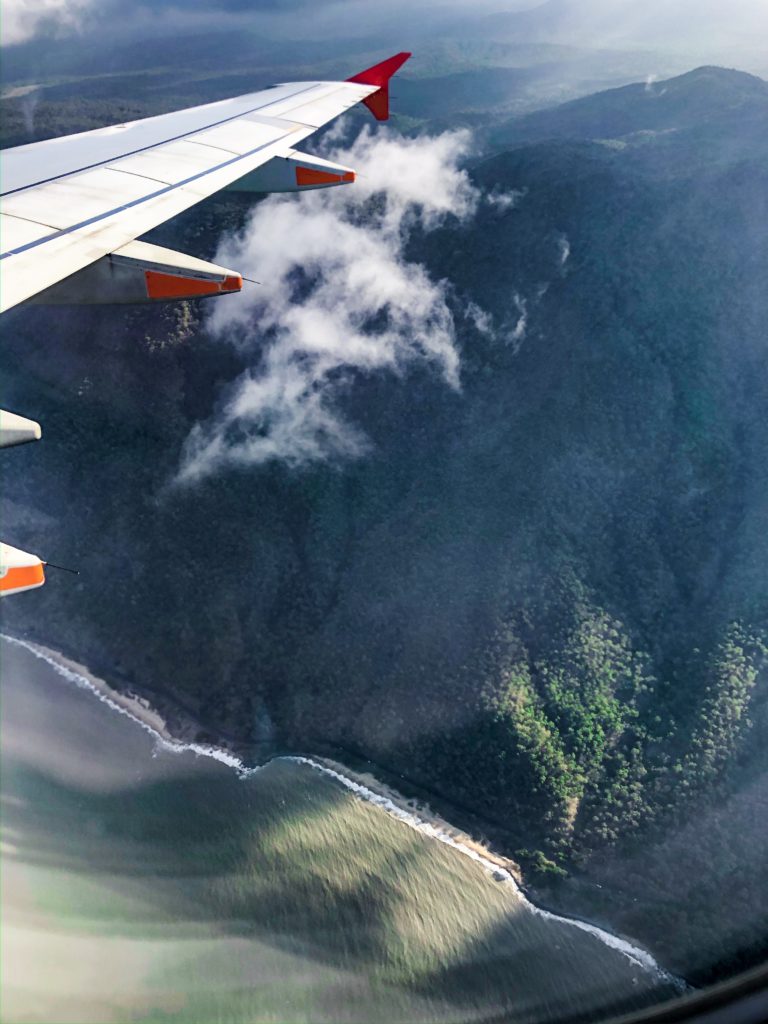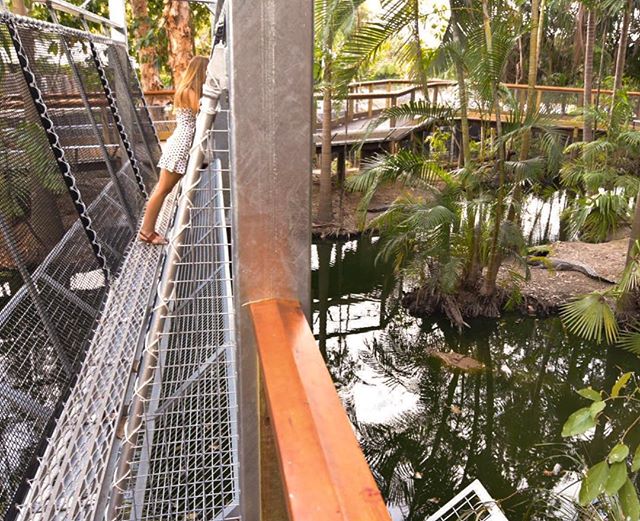
If you plan on visiting Australia anytime soon (good plan) there are a few things you need to know about this fantastic country that will make your planning, experience and memories of your trip even greater. Read on to find out the main things you need to know before visiting Australia.
1. It’s big
Australia is big. In fact, it’s almost 7.7 million km² (check out comparisons to other countries) and the cities are spread out across the country. Australians are used to this size and the distance between is normal to them; however, if you come from a smaller country, the distance may be a bit of a shock. While there are popular road trips across Australia (read: Cairns to Townsville: The 2 Day North Queensland Road Trip for Time Poor Travellers) and this is a great way to experience the vast distances and impressive landscape by land, the most common form of transport across Australia is flying. Make sure you factor in travelling time between the destinations you want to visit.

2. The people are laid back
A stereotypical trait of Australians is that they’re laid back. From my experience I believe this stereotype is correct overall. As a general rule Australians have a very relaxed way of looking at things including dress attire and interactions. I’ve found the more north or rural you go the more relaxed personalities you will find; however, even in the cities, Australians tend to be more laid back than other countries. There are always exceptions, of course, as blanket rules cannot be applied to a whole country; but when visiting Australia look forward to a lot of friendly g’days and a laid back atmosphere.

3. The wildlife can kill you …but it’s highly unlikely that it will
This is one of the questions I am asked the most about about friends before visiting Australia. It’s common knowledge that Australia is full of very dangerous animals. We have crocodiles, snakes, spiders, jellyfish, sharks… we could go on. While these animals pose a real threat, the likelihood of you coming across one is very small (I mean, if Australia was as dangerous as they say it is, how do so many of us still live here?!). The most important thing to know about these animals is where they live and what you can do to avoid coming into contact with them or how to react if you do.
For example: it’s pretty easy to avoid crocodiles by not swimming or entering their habitat (more details below). Or if you see a snake in the wild, almost every time the snake will flee. Snakes tend to attack if they are threatened or have no way of escaping. When hiking, keep a watchful eye and if you see a snake on the track, pause or back away to give the snake an opportunity to get out of your way.
Most visitors to Australia are very, very unlikely to come into contact with our dangerous animals (unless exploring a safe wildlife habitat or crocodile cruise – read: Cape Tribulation with Jungle Tours); but if you do feel overly concerned take a first aid course to doubly prepare yourself before arriving.

4. Sunburn is a real problem. Don’t underestimate the danger of the Australian sun.
If you are looking for what can kill you though, I’m sorry to say but it’s the Australian sun and this is something that’s very important to know before visiting Australia. Australia has some of the worst UV levels in the world that should not be underestimated. In fact, two thirds of Australians will be diagnosed with skin cancer by the time they are 70. While Australia has some incredible beautiful beaches, don’t treat this country like the ultimate tanning trip. Unlike Europe, instead of coming away with a tan, you’re likely to come away with some serious sunburn and peeling skin.
If you don’t want to completely cover up while out enjoying our incredible coastline, be sure to wear sunscreen. I recommend SPF 50+, applying it everywhere that is exposed to the sun (you’ll find out at the end of the day if you’ve missed a spot, I’ve certainly learnt that from experience!), and re-applying throughout the day (especially after hopping out of water).

5. It’s likely you will find Australia more expensive than your home country
Sorry in advance. Australia is considered to be quite an expensive country by other standards. The minimum wage in Australia is quite high and therefore cost of living also is. I would consider Australia on par with Western Europe if you are looking for budgeting tips. Despite this higher cost of living, there are many ways to cut costs down when visiting Australia – including taking our budget airlines, volunteering on dive boats and buying groceries instead of eating out all the time.

6. However tips are not required, nor expected. At all.
For those coming from countries where they are used to tipping, it is not expected in Australia, at all.
As I mentioned above, Australia’s minimum wage is quite high and as a result, customers don’t have to dig into their own pocket to pay the employees of the business they’re visiting by tips. Tips are not expected by Australians at all and you will not be considered rude by not leaving one. Of course, no one turns down free money, so if you want to tip it won’t be rejected but I personally would recommend tipping to the entire business rather than just your server. A lot of work goes on behind the scenes and it’s not fair if only waiters benefit at the combined hard work of the team.
While eating out in Australia may be more expensive than back home, not having to tip can make this expense even.

7. Swearing and bad language isn’t always intended to cause offence
This one might seem unusual depending where you are from but in a lot of cases, swearing and using particularly bad language (in a friendly tone) can be a sign of endearment rather than offence. Of course, if someone is swearing their head off at you and looking angry, they mean it. But as mentioned earlier Australians are more laid back and many don’t take offence to particularly rude swear words (some are even considered a compliment). If you’re moving to Australia, I wouldn’t recommend trying this out on your first day at work. However, if someone is swearing but their tone is friendly, they’re not meaning to cause offence.

8. There is considerably more to Australia than just Sydney and Melbourne
While Australia’s biggest cities are located in southern Australia and there is no doubt you want to tick Sydney Harbour Bridge and Melbourne Street Art off your Australian bucket list, there is considerably more to Australia than just Sydney and Melbourne.
If you really want to immerse yourself in this country I strongly recommend visiting Queensland (duh, I imagine this is already on your Australian bucket list) for the Great Barrier Reef, the World Heritage rainforest and everything in between. I also love the Northern Territory and Western Australia. Outback Australia is something very unique to this country and I highly recommend including these experiences on your Australian trip.

9. It gets cold here
Australia is considered a country of eternal summer; where a lot of people escape the cold winters of their home country to run around our sunny country. However, it is important to know before visiting Australia that while Australia is considerably warmer than a lot of countries around the world, do prepare yourself for cooler weather, especially if visiting in Australia’s winter.
Unlike the Northern Hemisphere, Australia’s winter is June, July and August with Australia’s summer running across December, January and February.
Up north in Cairns, winter is one of the best times to visit as the winter average is 17 to 26 degrees Celsius (63 to 78 Fahrenheit). However, do bring a jumper with you. You will be surprised how quickly you climatise.
Uluru, in the middle of outback Australia, will reach 2 degrees Celsius (35 Fahrenheit) in winter, which can be quite a shock for those expecting the red centre to be sweltering hot.
Melbourne, at the bottom of Australia, will reach 6 degrees Celsius (43 Farenheit) in winter. Melbourne has the reputation of having four seasons in one day and this photo below of my friend, Sam, rugged up was actually taken in the first week of December.

10. You can drink the tap water
Tap water is safe to drink in Australia, unless otherwise signed. Not only is this great for the environment (less plastic bottles), it is also great for your wallet if you’re looking to save a dollar or two.

11. Be croc savvy
While the above comment still stands about the wildlife unlikely to harm you, you must take crocodiles seriously. Found mostly in the North of Australia, crocodiles take no prisoners and will kill you if you are in their habitat. It is very easy to avoid crocodiles by ensuring you follow all signs that indicate if crocodiles may be present in the water. Don’t trust your own eyesight as crocodiles are very well camouflaged and can also hold exceptionally still, making them difficult to spot in and out of the water. If you have any doubt (in the Northern Territory the rule is to assume there are crocodiles in all water that is not signed to be safe) don’t get in the water.

12. Australians love to eat out
And the food is really good! A popular activity for Australians is eating and drinking and as a result there are a vast variety of dining out, in, take away, markets, you name it, to choose from. If you’re in Melbourne it is almost a right of passage to order a coffee and some variety of avocado on toast in a laneway cafe.
13. Most places accept cash but card is becoming more common
Australia is still reliant somewhat on cash, with some smaller businesses enforcing a minimum payment by card or a card surcharge. Personally, I go everywhere with just my card and avoid places that are cash only. If you don’t want to take out Australian money while you’re here there is high chance you won’t actually need to.
14. English is the main language
While there will be pockets of Australia that speak other languages, English is the most common and official language of Australia. If you are visiting popular tourist locations (i.e. Cairns) you will likely find tour guides and staff who work at tourist attractions that speak your language; however, to ease in travelling around Australia, English is an important tool to have.

Places like Skyrail Rainforest Cableway in Cairns will have multi-language staff; however, other places in Cairns (like supermarkets) are unlikely to.
15. A stinger suit is your best friend
Still standing by what I said earlier about the Australian wildlife being unlikely to harm you. However, if you are visiting the northern waters between October and May, cover up with a stinger suit. The northern waters have Irrikanji and Box Jellyfish, both which can cause considerable pain. It is still safe to jump into the water and explore the incredible Great Barrier Reef, but be sure to cover up first.

16. Australia is home to the world’s oldest tropical rainforest
Did you know? It’s a pretty cool fact about Australia that still isn’t widely known. The Wet Tropics World Heritage Area located in North Queensland is the oldest tropical rainforest in the world. Estimated to be 120-150 million years old, this rainforest existed when dinosaurs were roaming the Earth and have survived world changing events like Ice Ages!

Australia is my favourite country in the world and I feel very lucky to have grown up here. Enjoy exploring!
If you are interested in this, you may be interested in




